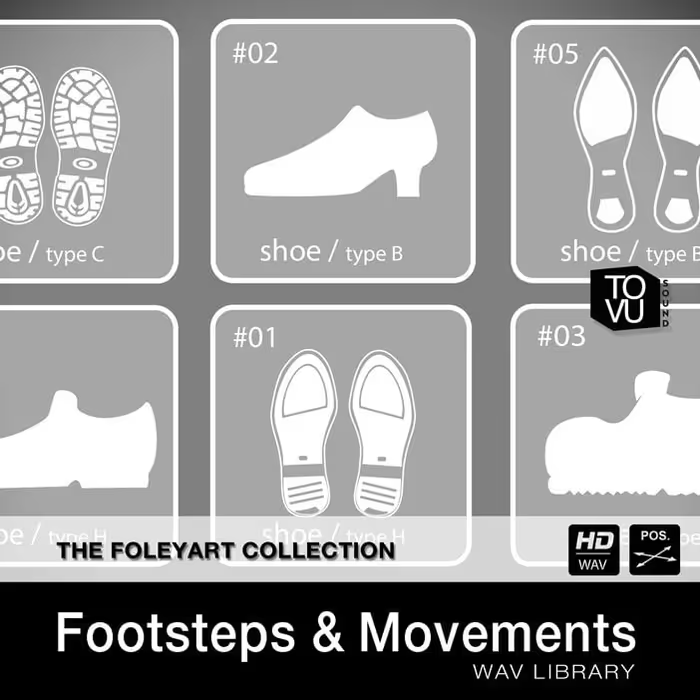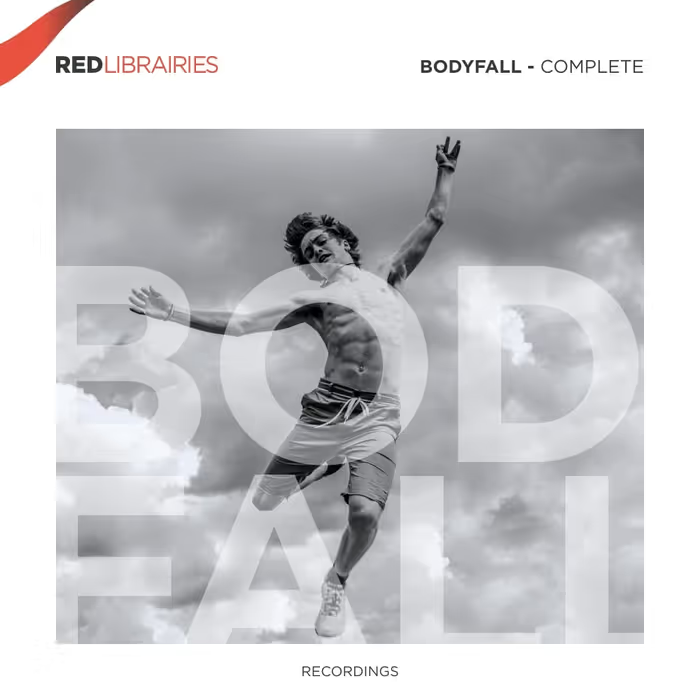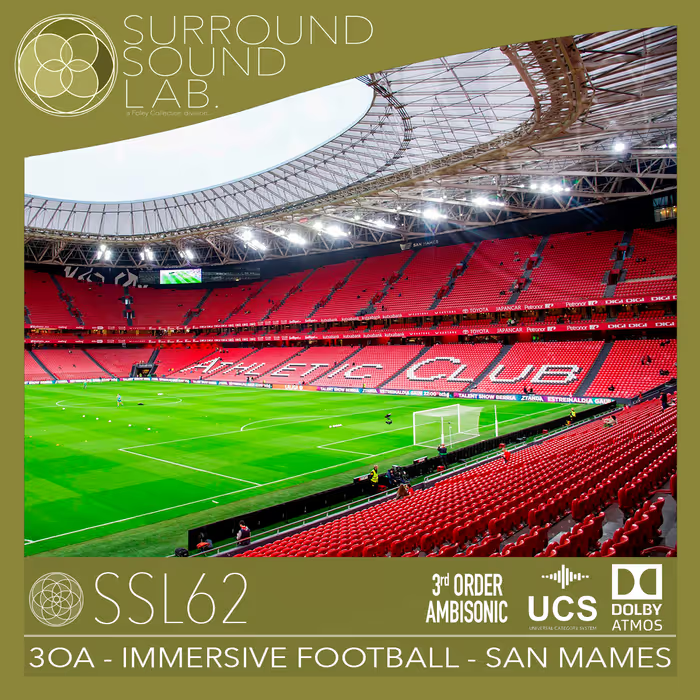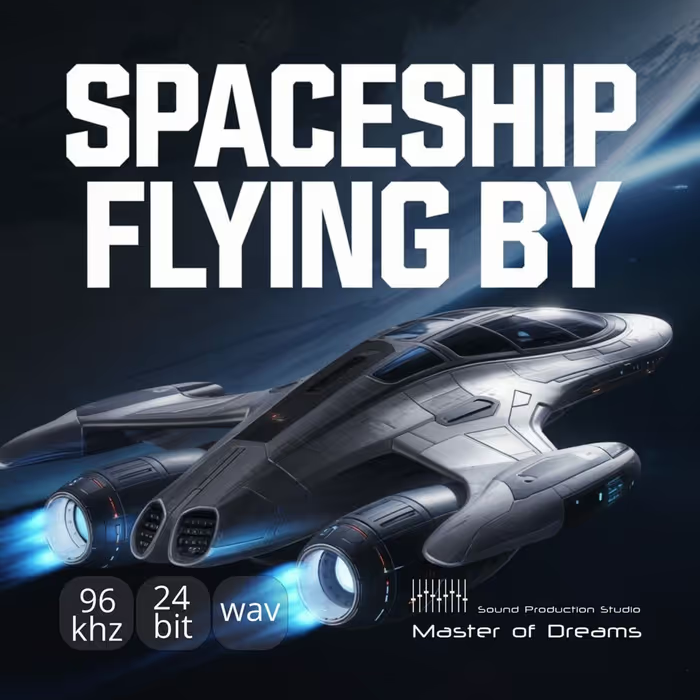Here, Christian Hagelskjær chats with lead and principal sound designer Jonas Breum Jensen, and sound designers Gabriel Johannesson and Ivo Sissolak from IO Interactive.
They talk about designing distinct locations, creating ‘impactful’ stealth sounds, using train motifs, collaboration during COVID, and much more!
Hitman 3 – Official Gameplay Trailer
Hi guys, why don’t you introduce yourselves and what you do?
Jonas Breum Jensen (JBJ): Hello, my name is Jonas Breum Jensen. I was the leading principal sound designer on Hitman 3. I’ve been working as a sound designer and audio lead on a lot of the Hitman games here at IO Interactive. So I’ve been totally immersed in Hitman sound design for more than 10 years.
I’d like to mention a few members of our team that are not part of this interview. We had Stepan Boev as our lead audio programmer, and Sebastian Pohle as a senior sound designer on Hitman 3. Then we have Ciaran Devlin-Rushe as a sound designer, and Kristian Svane Rømer who was also a sound designer.
I also want to give a shout out to our amazing composer Niels Bye Nielsen, who scored the entire World of Assassination trilogy.
Gabriel Johannesson (GJ): My name is Gabriel Johannesson. I’m a sound designer here at IO. I started working here in late 2019. So I’ve been a part of Hitman 3 and I’ve been mostly in charge of the Dartmoor and Berlin levels.
Ivo Sissolak (IS): Hi, I’m Ivo Sissolak. I’m also a sound designer. I joined a little bit later than Gabriel. I came on board in 2020 and I worked mainly on the last two missions: Mendoza and Carpathian Mountains.
And I also did some of the UI sounds in Hitman 3.
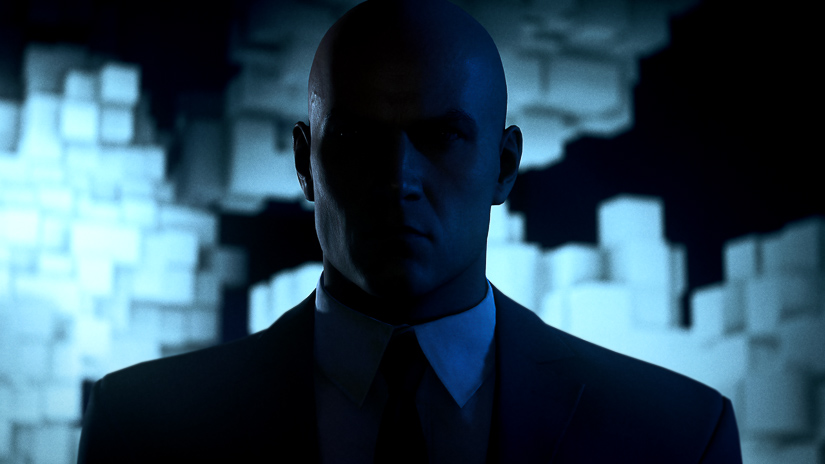
From an audio perspective, what would you say the main difference would be between the World of Assassination trilogy and the older games?
JBJ: If you look at just the entire Hitman franchise (all of the games), then there’s one game that stands out from all the others. That’s Hitman: Absolution, which is actually the game I started on.
So we have the first games and they defined the formula. It’s a sandbox game. It’s a murder simulator. There’s a lot of storytelling elements combined with a lot of freedom of choice.
There’s a lot of storytelling elements combined with a lot of freedom of choice.
And then for Hitman: Absolution, we wanted to do something completely different and challenge ourselves. That’s more like a movie; that was a big inspiration at least. So that one really stands out. And then for the World of Assassination trilogy that has been a lot about getting back to our roots, trying to do a modern take based on the formula that was defined in the first place.
Want the audio version of this interview? Hear it below – and if you want more interviews like this, be sure to subscribe to the A Sound Effect podcast (, iTunes, Stitcher, TuneIn and SoundCloud)
So in that sense, you could say that the trilogy is riffing a lot on the earlier games. But, of course, we learned a lot on Hitman: Absolution — about game design and about the Hitman game, but also about audio. We didn’t just throw that out. We were standing on the shoulders of Absolution, as well, even though that was the odd one out.
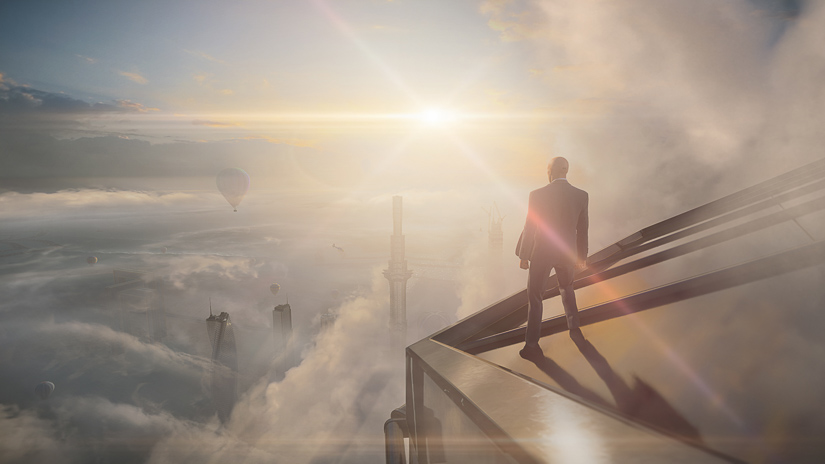
Yeah. It makes sense. You never stop learning…
JBJ: No. There are a lot of technological improvements as well and that defines the playground, the boundaries of the playground we were playing on as an audio team. So a big thing I would say is that the trilogy is made for a different console generation than Absolution and the games before. And with that, we had a lot more resources with streaming bandwidth and memory resources than we did before. So basically, we could go crazy on the audio team with the amount of variation and the level of detail in the environmental ambient sounds, and also the detailed level in the music, which are some of the key elements that were always key elements in the audio of the Hitman games.
There are a lot of technological improvements as well and that defines the playground…
So that was just amazing for us, to be able to move the key limitation from being a technologically imposed limitation to being our imagination that would set the limits. That was one big thing.
Another thing I would like to mention as well is that for the trilogy we have designed a really cool propagation and occlusion tech feature — especially Stepan Boev our lead programmer — and that has changed the way in which we think about designing a soundscape.
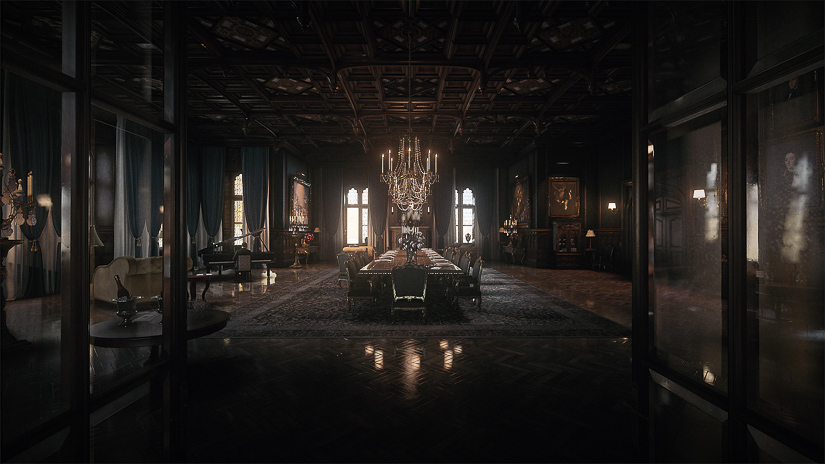
Could you explain, really quickly, what ‘occlusion’ means for people who are not that into game audio?
JBJ: So basically we are simulating a 3D world in the sound design we do.
In terms of propagation, how does a 3D sound placed in that world travel through the world? Acoustically, how does it react to different things that might be in the way of the sound source and the listener?
In the earlier games, before our new system, I can exaggerate a little bit by saying that we were mainly concerned about the world that was close to the player. We wanted to have a really cool mood in the environment you’re in. We had a lot of voice limitations and stuff like that. It just made sense then to focus on the close sounds because they would often be the ones you would have to react on. Those are the main threats, for example, NPCs and things like that.
With our new system, we would have a lot more depth of the environment because now we could also focus on the environments that were adjacent to the player and even farther away. So that gives us a much bigger world.
…in sound design, it’s a lot about not what you see in the camera but what you have in the periphery…
I think in sound design, it’s a lot about not what you see in the camera but what you have in the periphery that simulates that there is actually a breathing world around you that has consequences.
That was really cool for us, to widen our perspective with the sounds. That makes it possible for us as audio designers to inspire the player to explore because now you suddenly hear an interesting soundscape that might be behind you or in that direction over there. And you’re curious; you want to go examine it.
Or you will hear something that will inform your gameplay. In other ways, maybe when you can hear where a gunshot is coming from, it’s a much higher detail level and, of course, that will inform how you react and what strategies you come up with as a player.

Did you actually use that actively to shape the gameplay and that sort of thing?
JBJ: We did a lot.
GJ: And in terms of the new trilogy compared to the older games, I used to play the older games when I was younger. To me, the main difference is that this trilogy is really focused on more of a grand spectacle. It’s been a more larger-than-life, living, breathing world compared to the older games, which were a lot more confined — I guess mostly because of technical limitations, but still, it was very confined. It was still a very dynamic experience but very confined whereas now these very large, living environments go hand-in-hand with what we’re doing technically with the occlusion and everything. Now that we have a much larger and living world, the expectations of how sound behaves in this world also are higher than before.
JBJ: So in that sense, you could say, we went back to the sandbox that we had in the early games. After Absolution, we went back to the sandbox, but we expanded it and tried to do a modern take on the sandbox.
An interesting thing about our design approach that changed (maybe from all that we learned from Absolution), was that we don’t want to do a sandbox that’s close to what you would see in an open-world game, where everything is just free. That’s not really what we’re actually going for.
…we want some kind of cinematic feeling in the sandbox as well. We want it to feel orchestrated.
We want to combine that with having a more hand-tailored experience where it feels like the stuff you do has a consequence, and it’s actually directed in a way.
So to use a little bit of a cliché, we want some kind of cinematic feeling in the sandbox as well. We want it to feel orchestrated.
I think that informs our design approach. We do a lot in the trilogy. That’s something that we just practiced a lot: how do we actually think about this if we want the sound design to both be a world in itself, but also feel like it’s a movie? When you start doing things, start messing around, that’s basically two different directions that you need to be able to design for at the same time.
I think that’s what we’ve been practicing as a team a lot on these on three games.

So that’s really an ongoing development for you. So as I understand it, it’s not so much that technology has let you do this, but it’s really a kind of design process to learn?
JBJ: Very much so. There are also some stylistic changes, at least if we look at Hitman 3. That game has a tonal difference to the other two games in the trilogy. It’s basically much darker, much more personal. But hopefully, it doesn’t feel like a deviation. Hopefully, it feels like something that makes sense with the overarching story of the trilogy; that it becomes more and more personal as you get closer and closer to the characters and closer and closer to the climax of the trilogy story.
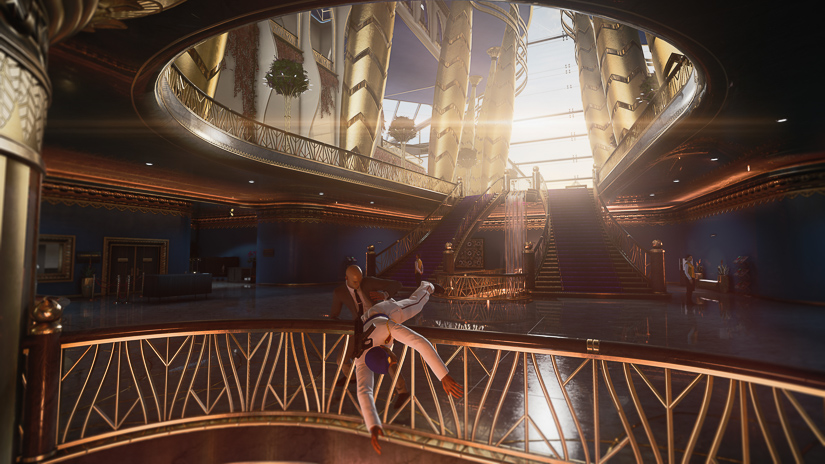
So it should feel like a natural development dramatically?
JBJ: Yeah, I think so. Often the way we approach stylistic and creative choices in these games is always a ping-pong between something that is the World of Assassination — the kind of professional layer — and then the actual places you visit. So we want it to feel like Italy when you are in Sapienza. And we want that to have a unique flavor, but we also want to contrast it between the cold-hearted killer and the institution that 47 and Diana are working for. There’s always that kind of ping-ponging. So I think that’s what hopefully also makes it feel consistent, that you always have the backdrop of the World of Assassination.

So you still feel where you’re coming from, from the older games compared to the two previous games in the trilogy?
JBJ: Yeah. And Ivo has been working a lot on the menu sounds and UI sounds and things like that. What he’s basically doing there is evolving the sound of the cold World of Assassination. The way our games are structured, when you play Hitman 2016 now (the first game in the trilogy), then you will play the updated version of the World of Assassination, that’s the menu sounds you will hear.
So we have that kind of evolve so it doesn’t sound like a modern version of the sound in 2016. It sounds like what our take on a modern cold institution interface would sound like in 2021.
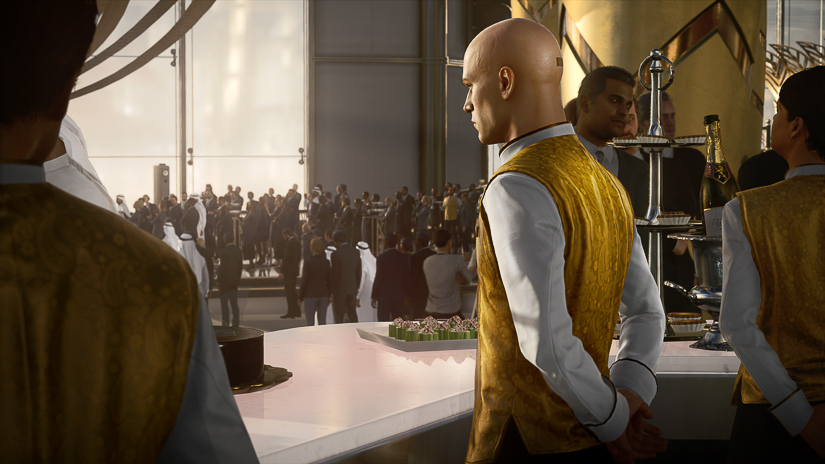
One thing I was wondering about was how you define the roles of different sounds in the game. For instance, in my world, there are ambient sounds, specific sounds (hard effects), and Foley. So how do you go about defining the roles of those sounds? How do you use them?
GJ: For me at least, before starting work on any sound, I always look into what role, what purpose does this sound have? Oftentimes it’s multipurpose, but it can range from something that’s just purely functional (i.e., it needs to be there and as long as it’s not quiet, it does its job) all the way to a purely emotional function (music is a very good example of this is) where the only role it fills is to convey a certain emotion to the player.
But a lot of times for Hitman 3, it’s very much a combination of everything. If I’m going to use ambiances — like you mentioned environment sounds as an example since Hitman is set in the very realistic world — everything is based in reality.
…the most important thing is: do these sounds fit the mood that we’re going for with this specific location and game overall?
So for example, in Dartmoor, it’s based on what would fit in that environment and what it looks like and everything, but at the end of the day for Hitman 3 (and I guess for the previous two games in the trilogy), the most important thing is: do these sounds fit the mood that we’re going for with this specific location and game overall? For instance, there are some birds that we have in Dartmoor that are based on this bird that you would hear in this area of England, but that doesn’t mean I’ll just throw any bird into the level. The call of this bird needs to fit the overall tone and mood that we’re going for. So it’s always a balance between: is this realistic or feasible versus what fits the overarching tonal idea and mood of what we’re you going for?
IS: I can actually tie into what Gabriel said last with the birds.
So for Argentina, for Mendoza, we always do a little bit of research so that we, as Gabriel said, don’t just throw in a bird that you only find in Europe. We put in a soundscape that’s in South America. So we do that research. And unfortunately, Argentina is one of those countries that hasn’t been as recorded as other countries have. It has such a rich and diverse soundscape, with Patagonia in the bottom. It has so many different species, but there haven’t been that many (or there haven’t been that many) bundles and recordings in that area. So it was very hard for me to find good source material for that, for example, and this limitation led to us think, ‘How do we solve this problem of not finding the right birds to put all over the level?’
I’m…being a little bit more creative and infusing some abstract elements, some surreal elements, and sort of adding a different flavor…
And for Hitman 3, we also shifted the way we approach these levels. Stepping away a little bit from this very literal approach of: this level is in China on a rainy day with a lot of lights surely there will be Chinese music playing from somewhere off-screen. And I’m stepping away from that and being a little bit more creative and infusing some abstract elements, some surreal elements, and sort of adding a different flavor to the very naturalistic approach that the prequels had, which were very straightforward, naturalistic sounding.
GJ: That’s very true for Hitman 3. Since the tone is darker, we’re more focused on the story this time around. For the audio team, that meant that for each location the main inspiration is what is 47’s mental state? Where are we at in the story?
That was always the main influencer in the overall soundscape of these locations instead of it just being purely literal. And that goes for not just the environment sounds; it goes for all the sounds, like the UI sounds that we talked about — all the new things we’ve made for Hitman 3 are influenced by where they’re going to be used and the mood of where you’re at in the story at that specific point.
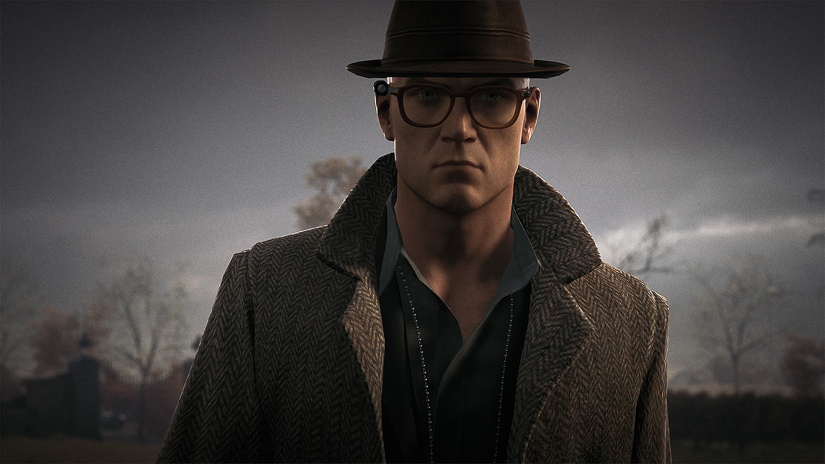
So you didn’t attempt to be strictly realistic at any cost if it made more sense to work with the mood instead?
JBJ: Or the other way around. We first wanted to go with the mood and then we wanted to be realistic enough so that it wouldn’t break immersion.
I think Sebastian Pohle coined a really nice way of describing that style. I think he called it ‘believable realism with surrealistic excellence.’ I think, for me, it sounds like something I want to do.
[tweet_box]Behind the Hard-hitting Sound of ‘Hitman 3′[/tweet_box]
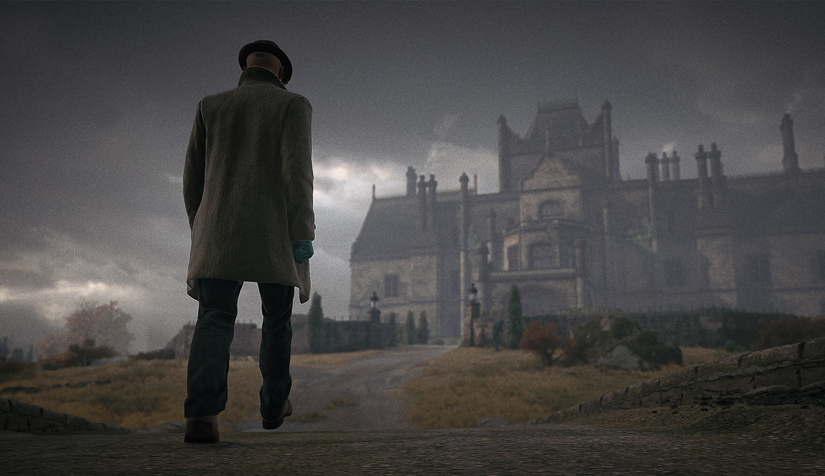
It’s a clever way to avoid criticism of putting the wrong birds into locations. I like it.
So about recording…I guess you didn’t send a recording team to Argentina?
IS: No. Correct me if I’m wrong Jonas, but I think for Hitman 2 you had an expedition team that went to Mumbai to do some source recording and do some research. Unfortunately because of time and budget constraints, it was not possible. And also with being in the pandemic, I think a lot of long-distance field recording was impossible, but we had the chance to record in our vicinity.
I actually have two bundles on A Sound Effect that I made a couple of years ago. I have a bit of a passion for field recording. And I kind of insisted on recording a lot of the sounds but I think that the vibe, in general, is that we want to be creative also in our source material and in our recordings and try to balance the use of library sounds with our own recording.
…we want to be creative also in our source material and in our recordings…
There are a couple of cool stories that I could mention. So for example, on Dartmoor — and this was one of my first tasks — we wanted to create this sort of howling through the mansion, like the wind that you heard outside but it’s almost like this entity, this creature that flies around and it has a spirit and this thing also affects the mansion. And so I was tasked to create some wind draft sounds for the insides. And just as a joke Jonas was like, ‘why don’t you just whistle through your teeth and record that and pitch that down?’
And then I was like, ‘yeah, why not??’
So at the time, I was living in Copenhagen in a very small room, as part of my onboarding. And so in this small room, after work, I recorded a couple of minutes of just me whistling through my teeth and whistling into cupboards and trying to create these interesting, resonant, airy sounds and after processing them a little bit and adding some reverbs and pitching them down, I think they actually work quite well to give a little bit of tonal texture to the mansion.
In the beginning, they were way too overboard and way too dominant. But after a couple of mix passes, I think they worked quite well and they actually ended up sounding very close to what a wind could sound like.
GJ: It also helps that since the idea was to have this sort of living building thing, if you really listened to it, you can hear a hint of something more personal than just a normal wind draft. I think that it really adds to the end results in a nice way.
JBJ: Could you mention a little bit about how we also used it as a storytelling device in gameplay? I think that’s super interesting.
IS: In the beginning, it was a little bit vague in regards to what we actually do with these. And I had a folder full of just different kinds of textured wind drafts. I just dumped them into the soundscape and at first it was like an ambient sort of filler to give the different areas in the mansion a little bit of variation in their tone.
But there are these secret rooms that you can go into in the mansion, that you can discover, and before you discover how to get into them we wanted to play this cue, so you hear it before you interact with the room opening. So we placed these draft sounds next to the opening of where the secret entrance is. So you hear a little bit of a wood rattle, but you also hear a draft coming from there, inviting you in and enticing you to explore this room.
…we wanted to play this cue, so you hear it before you interact with the room opening.
JBJ: So these would be literal secrets that you could find in the building. So here you have a draft because there is a hole in the wall. That makes sense in a realistic way as well, but then we expanded upon it to be: we want to tell the story about a house full of secrets. There is a murder mystery going on so you can basically become a detective and find all of these clues and stuff like that.
And so we worked with the idea: what if the house has a spirit that wants you to uncover the secrets? So basically the drafts going around would excite objects associated with the cue. So maybe there’s a paper note you can find somewhere, for example, with a clue on it and we’d make sure that would be lifted a little bit by the draft and have some rattling sounds that would inspire you to go look for it and I think that sort of thing was really cool.
GJ: I think it’s also worth mentioning that in combination with that we focused a lot on making things not ‘realistic,’ but very living in a sense. Like I mentioned before, all of these indoor drafts (at least the like 90% of them) are all connected to what’s going on outside. Like around the mansion, we also have some wind gusts that will then excite an open window; it’ll start rattling and stuff. But inside the mansion, when a wind gust rolls by that will then trigger gusts inside the mansion that will then trigger these secret clues. We worked a lot on making everything feel connected and reactive.
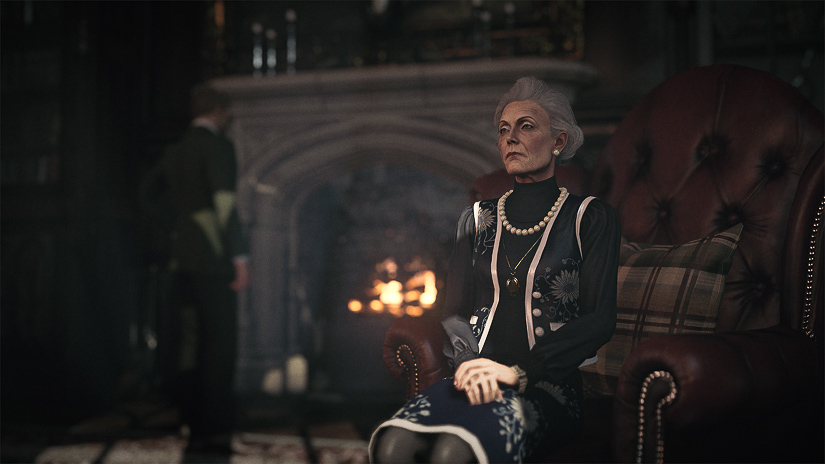
That sounds really nice. I’m a big wind fan myself…
GJ: Awesome. You’re going to love Dartmoor!
IS: Wind or the weather is something that Jonas can still talk about. The main motifs or the main themes that we had for the audio direction were the weather and the train.
JBJ: This is a little bit more general audio direction. In the first game in the trilogy, our main goal there was to define what it sounds like to be a super agent’s spy? What does this modern spy trailer sound like?
That was the main goal. That was where the weight was put on the World of Assassination — a modern agent thing. Then for Hitman 2, after that, the main goal was to make the locations prevalent. We wanted them to be very living and breathing and exciting and unique in their own way.
For Hitman 3, the weight is on closing the story, the narrative beats, and the key emotional development of the main characters.
There’s a lot of contrast in those locations. They are very different from each other in Hitman 2. That’s where we put our weight. For Hitman 3, the weight is on closing the story, the narrative beats, and the key emotional development of the main characters. That’s what will inform all of the choices we do.
Of course, music was a big device we could use for that, we knew. But we also wanted the audio as a whole to portray that. One thing we did concretely was that we defined the state of mind, as Gabriel mentioned, for each of the locations. So, you hear this location. It has to be believable enough so that you have the immersion and you hear what you’d expect, but we are not going to do the literal environment. We’re going to do the environment as perceived through a temperament. That’s the temperament of 47. So therefore it was important to say, ‘what state of mind is he in at a given time?’
So that was one thing we did — pin-pointed the state of mind, mood, and keywords we wanted in the different parts of the game.
Another thing we did was we came up with two light motifs that we wanted to use in sound design and also in music. We had designed it almost like a score; we wanted to orchestrate when it’s the sound design that uses these light motifs, when it’s the music, and when they are using these things in tandem. And, as Ivo mentioned, one of these motifs was weather. So we basically had the idea that 47 is a cold-blooded sociopath killer. He’s also your hero. So he is basically cold to everything. We take it a little bit further in this game because he is emotionally invested. So we wanted to use the weather to show his emotion. So a lot of the wind and the violent rain and the crackling dryness you will hear, that’s meant to represent the inner state of 47.
So maybe you could say that we have these evil villains that are the targets in the location, and they have maybe sucked the life out of the locations and made them cynical in a way. And now you get this force of nature coming in. On the surface level, he’s cold. But he has a lot of bottled-up rage that justifies a cleaning out of these villains from the location. That was how we use the weather a lot.
Throughout the game, we have sprinkled a lot of train sounds as metaphors.
The other motif was the train. Throughout the game, we have sprinkled a lot of train sounds as metaphors. You hear a lot of surreal train sounds and you hear literal train sounds. We have talked a lot about where we want to use them and to make sure that it had its own kind of climax. We also used it in music. So in some places in the score, you will hear a reference to train sounds, maybe in the pulse of the music, or you will hear references to train whistles and stuff like that in the music.
We will also hear it in the sound design, as more surreal sweeteners in sounds, for example in the UI but also in the abstract dreamy parts, and you will hear concretely where it becomes an actual train coming up.
GJ: Why did we use a train?
JBJ: We had a really good recording of a train. No, I’m joking!
I don’t want to go too much into spoiler territory but I can say that a train will play an important role in the game. So that’s the concrete justification for it.
Actually, one of the key characters has been associated with a train throughout the trilogy. The first time you meet that character is actually a conversation taking place on a train, way back in Hitman 2016. So that connection was already in there. We didn’t know at that time about any train motifs or anything like that. I think we were just lucky; it somehow made sense already that way.
So these are the literal connections, but the story about 47 is all about purpose and it’s all about who gives you purpose. So 47, he doesn’t really have any purpose himself. He is directed all the time. Someone controls him basically. And a lot of the story is about the fight for that control. Is it Diana, his handler? Is it the villain who controls him, who really calls the shots behind the scenes? So you have this power struggle between Diana and the main villain. They both want to control 47 and keep him on the rails, controlled like a train rolling on a track, where you can predict where he’s going.
But what happens with 47 if he wants to break away from that and have freedom? So there was something interesting in the story there that relates to the design. So when we design a sandbox, we want you to have freedom. But we also want it to feel like you have a purpose when you play. So that design schism is mirrored in the story in an interesting way.
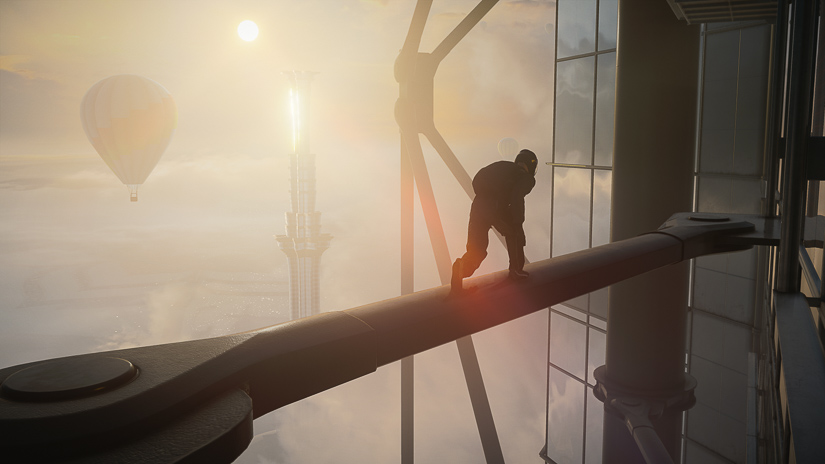
You keep the player on the rails, so to speak, but also do a bit of exploration…
JBJ: It’s very nice when someone tells you what to do but it’s also very nice to have freedom. But too much freedom and you might start missing the purpose. But that interesting dilemma, that’s where the train fits in.
So the train and the weather both represent something positive and negative at the same time, but we flavor it a little bit differently, depending on where in the story we are.
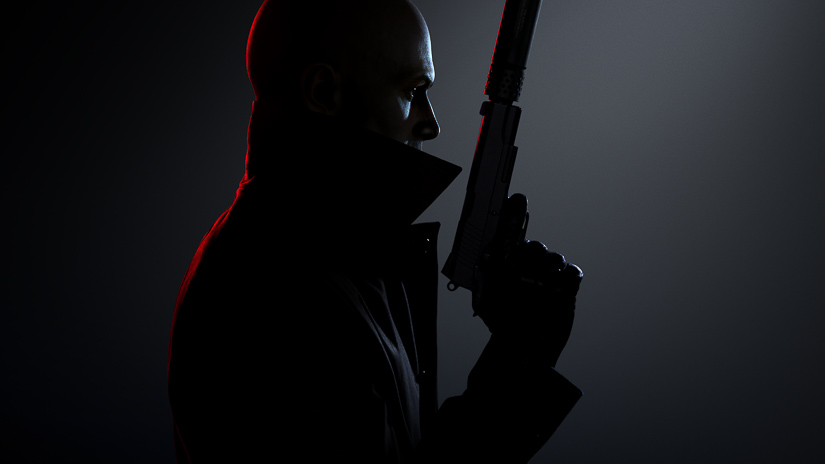
Another interesting question, of course, is how do you design sound for a game where you’re supposed to be quiet most of the time, to be stealthy? Obviously, you have some experience in that with all the Hitman games, but how did you approach it for this one?
IS: Since we’ve had 20 years of stealth game experience, I definitely tried out a couple of different takes on the genre. And I think it’s fair to say that we’ve also shaped the genre, in a way. So in terms of the sound, looking just at the World of Assassination trilogy, the first two games (2016 and 2018), it was a little bit more flamboyant, very passionate, very bold and focused on the act of killing or taking someone out.
So this is a balance between making the actions feel impactful and still maintaining this character of being an assassin…
With the third one, I think we’ve tried to highlight 47 a little bit more and make his actions feel more weighty, more impactful, which is hard because impactful naturally means with more force or louder. So that was a challenge because let’s say we wanted to make the guns and the punching, the close combat sounds, still feel impactful which is not technically stealthy. So this is a balance between making the actions feel impactful and still maintaining this character of being an assassin, which (like a Ninja) we associate with being very quiet, almost non-audible movement, which is tricky in a game because then you don’t have that auditory feedback. I think we managed to find a nice middle ground. We reworked a couple of sounds that were, in our opinion, a little bit too flamboyant for the third part.
So we toned stuff down. We adjusted some of the sounds. We aligned it a little bit more with the audio direction to make it feel more distinct, more clinical. We also used some of the gameplay mechanics, like the instinct mode, which is the mode where you can see through walls and you see certain objects highlighted. We actually rework that to be more useful to you, and as a tool to highlight certain things.
In the previous games, instinct mode was pretty much all the sounds that were in the world, just muffled. But we wanted to go a level deeper with that and only muffle the sounds that were unimportant to what you were doing, like the ambience and the environment that were not crucial to your objectives and the mechanics.
To give the player a bit more focus in that situation?
GJ: Also something that is completely new for Hitman 3 is that — for example, when you take someone out from behind and choke them out — instead of that sounding violent and intense, like it used to, we reworked that. We added some abstract stingers to specific stealth actions in a way that’s not more believable because it’s an abstract sound, but in a nice-sounding way that still makes sense for the game to highlight these cool stealth actions instead.
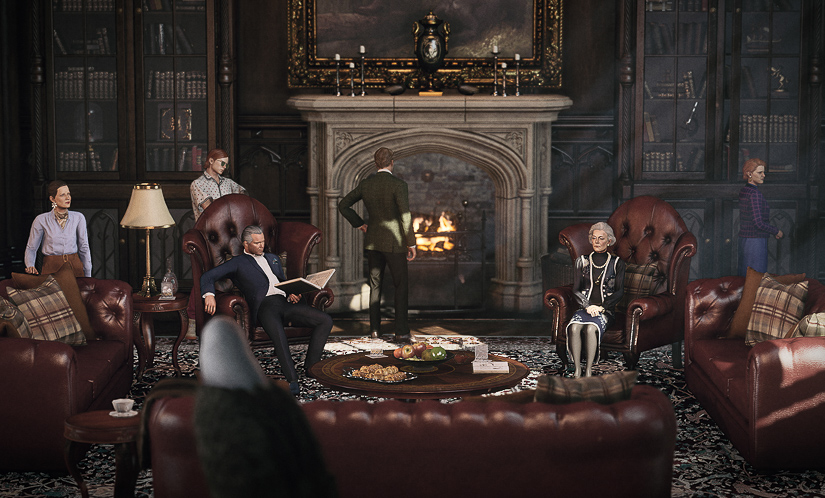
So it’s non-diegetic, right? It’s not taking place in the scene; it’s outside of the scene in a way, but the player understands what it’s about?
IS: Yeah. Other games do it as well — like in Assassins Creed: Valhalla, for example, which I’ve also been playing — when you take someone out (when you jump on someone and assassinate them) there’s this impact, like this boom sound, which you don’t hear when you stab someone. It’s an exaggeration but it adds to the weight. It adds to this feeling of, ‘damn, that was a powerful move that I just did.’
So it’s more emotional than real in that sense…
GJ: That also fits perfectly with what we were going for with Hitman 3, in just focusing on the mood and tonal aspects of everything, just tying everything together from the menu sounds into the actual game sounds and everything.
JBJ: In that way, maybe making a contract as well with the player. So they understand that they feel powerful. But they also understand that the NPCs are not hearing the sound.
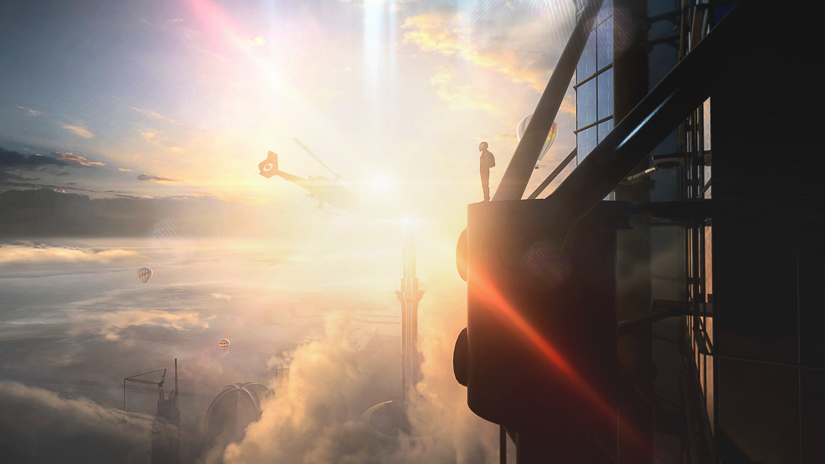
So one thing, of course, I have to ask is about the whole COVID-19 situation. I guess it must’ve been a problem for you as it is for anyone else? How does a large team work with audio remotely like that? How does that work?
JBJ: I think, in a way, I felt very lucky being a sound designer under COVID because what I love about game audio is that it’s all about escapism. Basically, you’re building a world that we ask a player to live in. It has to be something that portrays a world and it should do it in a way where it inspires the imagination of the player. And to be able to do that then, you as a designer have to go there and assign that work and you have to escape and you’re playing with your own imagination. That was just a complete privilege, to have that place to go under lockdown and with the cabin fever and stuff like that.
Hitman is just great for that because in some games the environments are not the most important thing, but in Hitman it’s one of the most important things. And it’s a globe-trotting game so you are going to go to very different locations and if you can’t take a plane to somewhere in reality, then it’s nice to go to work and then you can be in sunny Mendozza.
IS: Especially in VR, it really feels like you’re taking a holiday.
You call that work? All right. All right.
IS: We’re lucky for sure.
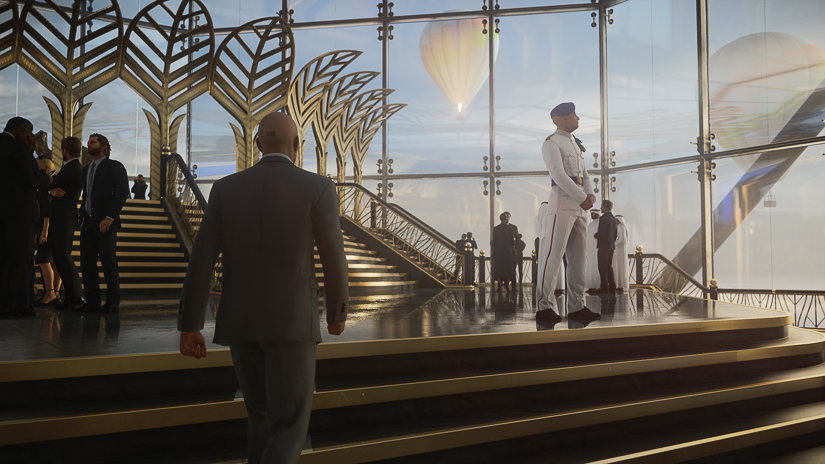
Were there any technical difficulties in terms of the design process, with not being in the same room and that sort of having thing?
GJ: We were lucky in a way that we have very recently opened up a second studio here in Malmö, Sweden, where me and Ivo are, and Jonas is in Copenhagen.
We had already started planning a little bit for more disconnected teams in a way. We’d already started thinking about that. So we were in a very good position. I think IO Interactive was very good at taking the whole pandemic seriously in the beginning and sending people home. But I think the majority of the audio team has been lucky that we’ve been able to get to work without public transportation. And because we already sit in our own rooms anyways, it made sense that we were part of the very few who were still working from the office. I’ve been at the office the entire pandemic.
…it made sense that we were part of the very few who were still working from the office. I’ve been at the office the entire pandemic.
But in terms of how we work, it definitely changed a few things. We started having more daily morning meetings to just chat with each other and update each other, which really helped.
Also, instead of the normal Hitman way of working — where each person is assigned a location that they own and work on — we started doing focus periods where a bunch of us would work on the same level and get that up to a good enough state. And then we would move on to the next level. So we tried to work together as much as we could, which I think turned out to be an effective way of working on our levels because we had a lot of levels and a lot of stuff needed to be done.
Getting all of that up to a decent state early on was super helpful because we could then go back and finish up the last polished stuff on our own. But also it was very beneficial to actually work together and, for me at least, it very much helped with keeping the team spirit up.
Yeah, that makes sense. So what’s next for you guys?
GJ: For me, at least, I’ve already moved on from Hitman. I’m working on the James Bond project already. So for me, there are many new, great things going on right now.
JBJ: There are limitations to what we can mention about next steps. The 007 project has been announced. There’s other interesting stuff going on at IO Interactive.
And it was openly said that Hitman World of Assassination is a trilogy. And we want to complete that story in a satisfying way. We wanted to have a closure that will leave the characters and the World of Assassination in a good place for what might be the next steps.
So maybe a trilogy ‘Part 4’ as you sometimes see?
IS: That would break the trilogy part of it at least.
We’ll see about that, I guess. In wrapping up the interview, I understand you guys have a little request. You are looking to hire some more sound people?
IS: Yeah. Having concluded the Hitman 3 trilogy, we have some super exciting projects in the works, one of them being 007, but there are more things coming, more exciting things. And we would love to also bring new people on board and grow the studio. So if anyone out there is looking to work with some cool audio peeps, I think we’re a fun squad of people to work with.
That sounds like a great opportunity! Thanks so much for joining me and hope to talk to you some other time.
A big thanks to Jonas Breum Jensen, Gabriel Johannesson and Ivo Sissolak for giving us a behind-the-scenes look at the sound of Hitman 3 and to Christian Hagelskjær for the interview!



